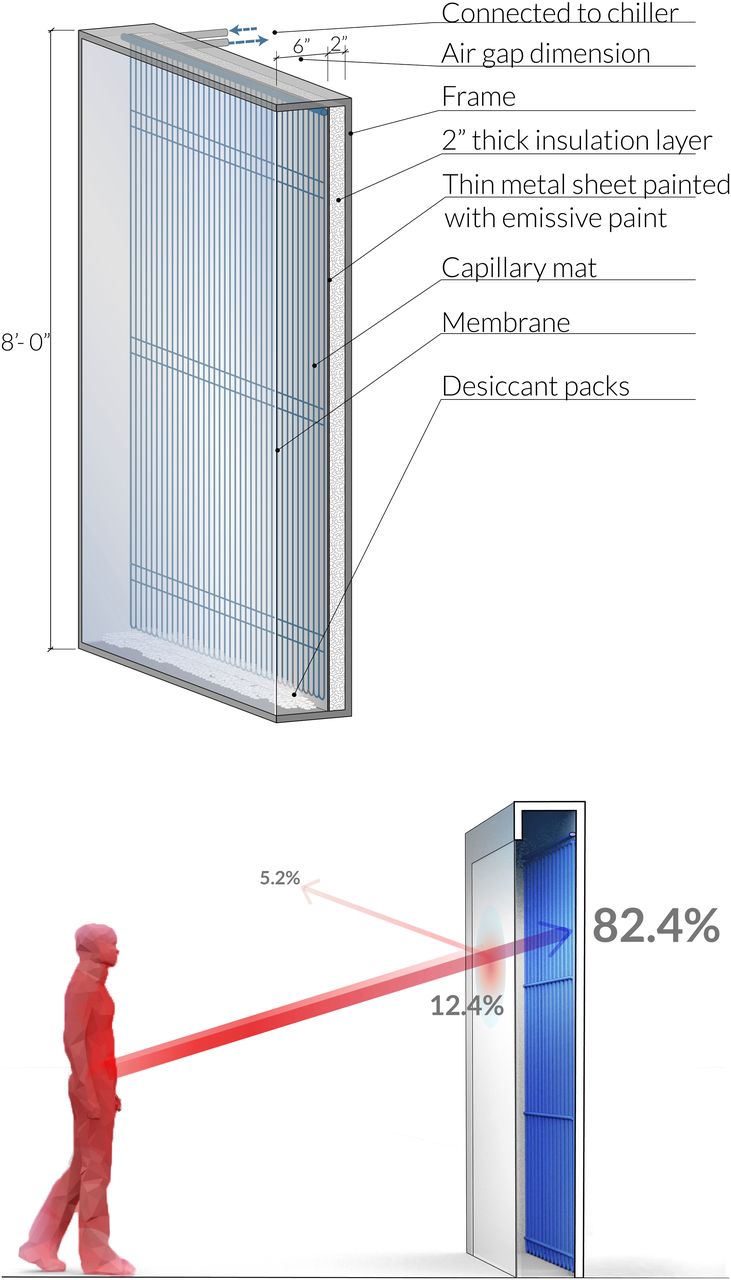Cooling Without Air Conditioning
A collaboration of researchers from various disciplines used an Apogee SP-510 thermopile pyranometer and an SL-510 pyrgeometer to study a method of cooling people without cooling the air (by chilling surfaces and using thermal radiation). The manuscript was compiled on March 26, 2020.
The completed pavilion, known as the Cold Tube, allows radiation to pass, but not air and humidity, thus reducing convection and eliminating condensation. Net radiant heat transfer between occupants and surfaces was measured using an Apogee SL-510-SS pyrgeometer and an SP-510 pyranometer. The researchers found that the Cold Tube is a step forward for demonstrating 1) radiation and convection can be separated for comfort conditioning, and 2) to rely on radiation alone to product comfortable conditions. This research and resulting new technology of membrane-assisted radiant cooling could reduce comfort-related energy demand worldwide (e.g., air conditioning).
Read more about the research below。
 Fig. 1.Schematic of a Cold Tube radiant cooling panel(Upper)and radiant heat transfer through the IR-transparent membrane(Lower)。
Fig. 1.Schematic of a Cold Tube radiant cooling panel(Upper)and radiant heat transfer through the IR-transparent membrane(Lower)。ABSTRACT:We present results of a world-first radiant cooling system that made the hot and humid tropical climate of Singapore feel relatively cool and comfortable. Thermal radiation exchange between occupants and surfaces in the built environment can augment thermal comfort. Even in air-conditioned spaces, radiation exchanged between occupants and their surroundings accounts for approximately 50% of their perceived comfort (1). The lack of widespread commercial adoption of radiant cooling technologies for indoor air conditioning is due to two widely-held views: (1) the low temperature required for radiant cooling in hot and humid environments will form condensation and (2) cold surfaces will still cool adjacent air via convection, limiting overall radiant cooling effectiveness. This work directly challenges these views and dispenses with them. We constructed a demonstrative outdoor radiant cooling pavilion in Singapore that used an infrared-transparent low density polyethylene membrane to provide radiant cooling at temperatures up to 20 °C below the dew point. Surrounding the radiant cooling surfaces by an air-gap and infrared transparent membrane permits radiation exchange to occur between the human body and cold surfaces whilst avoiding condensation on any exposed material as well as significant convective heat transfer losses. Test subjects who experienced the pavilion (n=37) reported a 'cool' to 'neutral' thermal sensation 81% of the time, despite experiencing 29.6 ± 0.9 °C air at 66.5 ± 5%RH and with low air movement of 0.26 ± 0.18m s-1。舒适性是通过23.9±0.8°C的重合平均辐射温度实现的,需要冷却供水温度为17.0±1.8°C。尽管观察到的露点温度为23.7±0.7℃,但亭子成功地运行而没有任何观察到的暴露表面的冷凝。在没有冷凝的情况下观察到的最寒冷的条件使用了露点下方的冷却供水温度12.7°C,这导致平均辐射温度3.6°C低于23.7°C的露点。

Fig. 2.The completed Cold Tube
